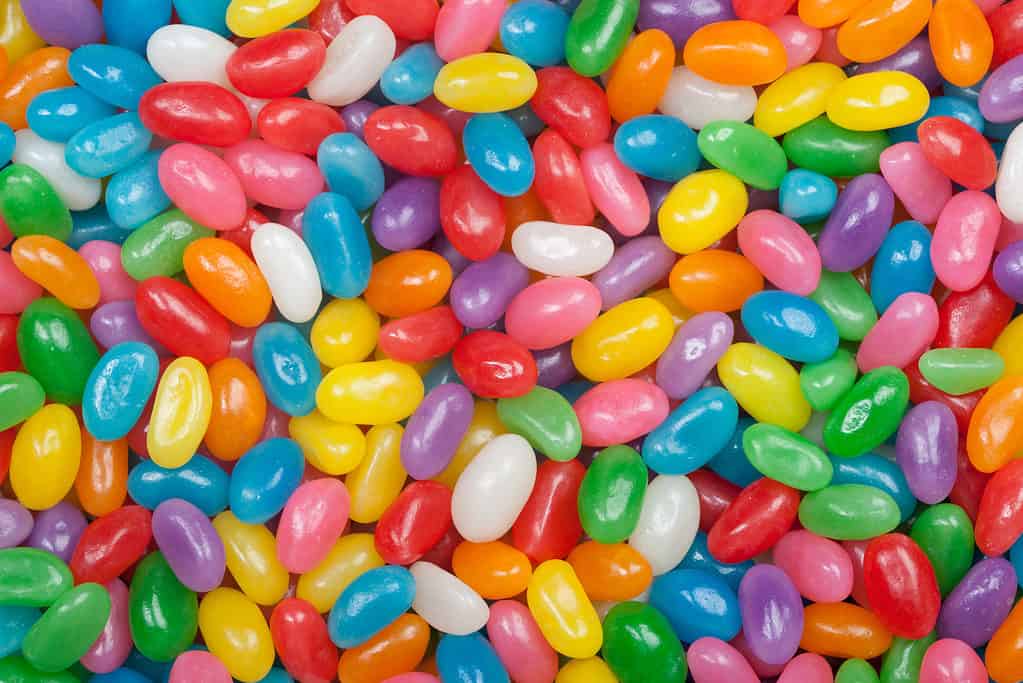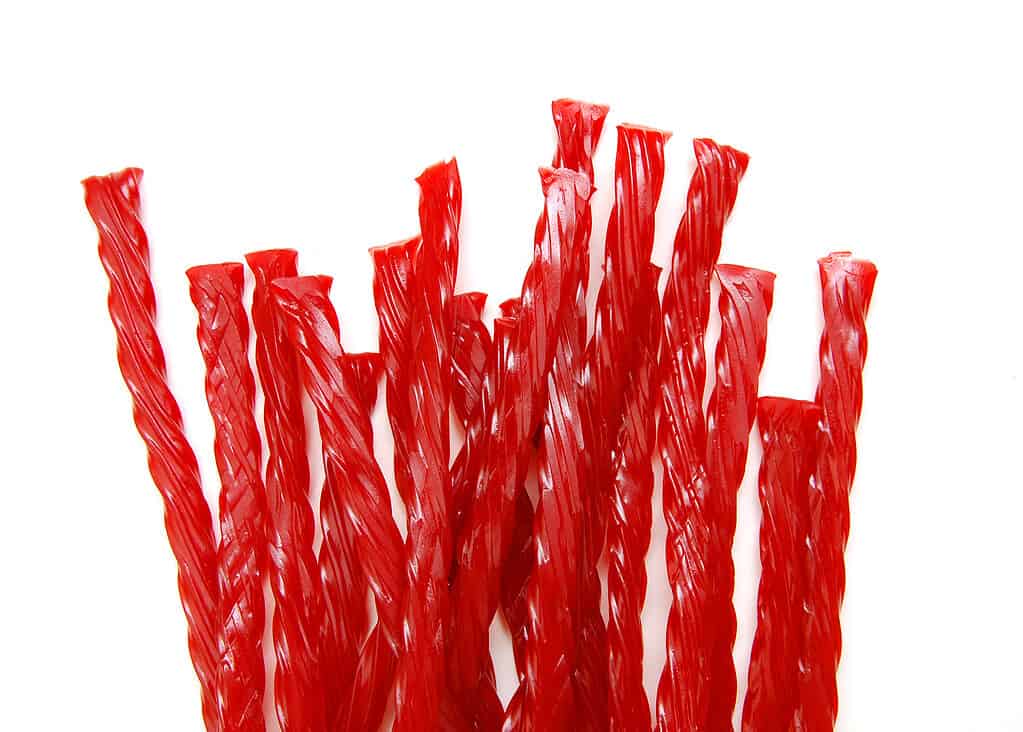Whenever I have a bite-sized snack, I wonder if I can give just a little piece to my dog! You might’ve wondered then, can dogs eat jelly beans?
Unfortunately, jelly beans aren’t healthy for dogs because they contain too much sugar. In addition, some jelly beans contain toxic ingredients like caffeine or Xylitol, which can hurt your dog even in very small amounts.
It’s best to keep the jelly beans to yourself. In this article, we’ll discuss alternative foods for your dog if you’re worried about them being left out.
We’ll also talk about the potentially toxic ingredients in jelly beans, what to do if your dog eats them, and more.
Are Jelly Beans Toxic to Dogs?

Can dogs eat jelly beans? No!
©Daniel Wiedemann/Shutterstock.com
Jelly beans can be toxic to dogs if they contain xylitol or caffeine. Below, we’ll go over each type of poisoning and what to do if your dog gets ahold of jelly beans containing these ingredients.
Xylitol Poisoning
Xylitol is a sweetener frequently used as a sugar replacement in sugar-free foods.
This sweetener has many names and might be listed in the ingredients as birch sugar, wood sugar, or birch bark extract.
Symptoms can begin just 20 minutes after ingestion and include:
- Vomiting
- Tiredness
- Weakness
- Collapse
- Difficulty standing or walking
- Trembling or seizures
- Coma
- Liver failure
- Bleeding problems
Xylitol poisoning can kill a dog, so it’s important to get them to the veterinarian right away if they’ve eaten jelly beans containing it.
Please call your nearest emergency vet clinic for help if your primary veterinarian is closed or busy. They might suggest you call a pet poison hotline before coming in.
If you can, bring the packaging for the jelly beans so you can show the vet exactly what your dog ate. Tell them how many jelly beans your dog had and if they’re currently showing any poisoning symptoms.
Caffeine Poisoning

Xylitol is toxic to dogs in very small amounts (just .1 gram of Xylitol per kg of body weight is toxic).
©didesign021/Shutterstock.com
Caffeine can also be found in jelly beans–a one-ounce bag contains approximately 50 mg of caffeine. Though not as toxic as Xylitol, caffeine can still make dogs sick or kill them in extreme cases.
Symptoms of caffeine poisoning include:
- Vomiting
- Diarrhea
- Panting
- Excessive thirst and urination
- Abnormal heart rate
- Tremors or seizures
- Organ damage
- Damage to the central nervous system
According to the American College of Veterinary Pharmacists, it takes 63 mg of caffeine per pound of body weight to poison a dog.
This means that a couple of jelly beans aren’t likely toxic. If your dog eats a lot of jelly beans, though, especially if your dog is small, you should contact a pet poison hotline or a veterinarian right away.
When in doubt, I always recommend at least calling to get a professional’s opinion–especially because symptoms of severe poisoning, like organ damage, cannot always be seen from the outside.
What Happens if a Dog Eats a Jelly Bean?
If a dog eats a single jelly bean, they are unlikely to suffer any effects. The exception may be if the jelly bean contains Xylitol, as this sweetener is toxic to dogs in very small amounts (just .1 gram of Xylitol per kg of body weight is toxic).
If your dog eats jelly beans containing Xylitol, please immediately call a pet poison hotline or veterinarian. They can advise you on whether your dog needs to be seen.
Your dog should be fine if the jelly bean doesn’t contain Xylitol. However, the sugar in jelly beans still isn’t good for them, so ensure your dog doesn’t have access to jelly beans or other unhealthy foods in the future!
What Candy Can Dogs Eat?

The high sugar content in a candy such as Twizzlers makes it understandably unhealthy for dogs and humans.
©Tiger Images/Shutterstock.com
Preferably, your dog won’t eat any candy at all. While candy is okay for humans in moderation, it’s not good for dogs.
They are more sensitive to sugar than we are. This is even more true of small dogs since they need less food and sugar overall in their diets.
However, some candies are more dangerous than others. Avoid sugar-free candies because they often contain Xylitol and could hurt or kill your dog. Other ingredients in candy that are toxic to dogs include caffeine, chocolate, raisins, and artificial sweeteners.
Alternatives to Jelly Beans for Dogs
The best treats for your dogs are the following:
- Cooked, unseasoned meats like chicken or turkey
- Healthy vegetables like green beans or broccoli
- Dog-safe fruits like bananas or blueberries
- Superfoods like sweet potato or pumpkin
If you’re looking for a sweet treat, your dog can eat, offering them fruit is a great, healthy way to give them that experience. A couple of blueberries or a slice of banana provide natural sugars, which are healthier than the sugars in candy.
Carrots also contain a lot of sugar for a vegetable, and many dogs love them!
Up Next:
The photo featured at the top of this post is © Daniel Wiedemann/Shutterstock.com
Ready to discover the top 10 cutest dog breeds in the entire world?
How about the fastest dogs, the largest dogs and those that are -- quite frankly -- just the kindest dogs on the planet? Each day, AZ Animals sends out lists just like this to our thousands of email subscribers. And the best part? It's FREE. Join today by entering your email below.
Thank you for reading! Have some feedback for us? Contact the AZ Animals editorial team.






